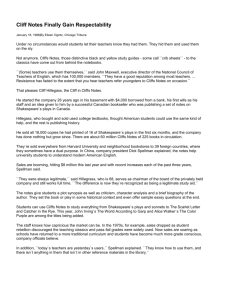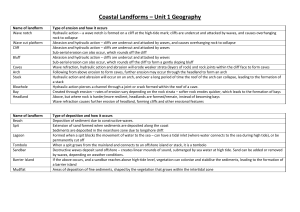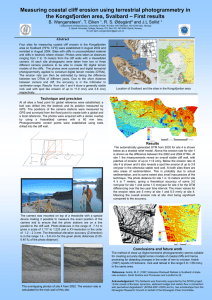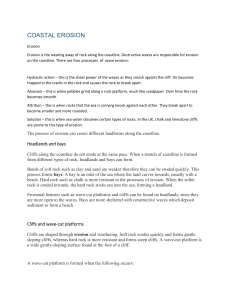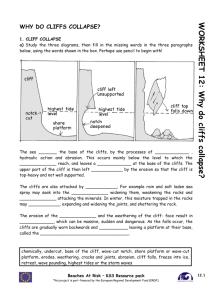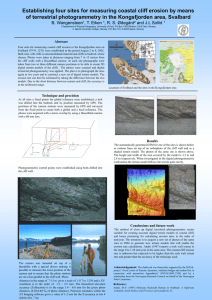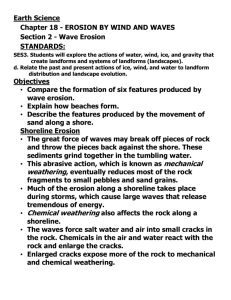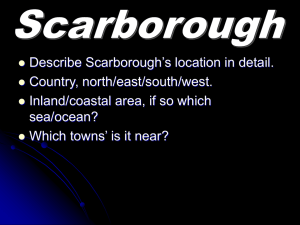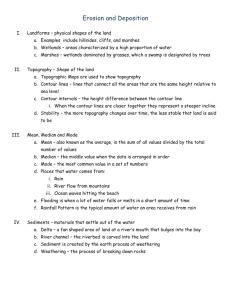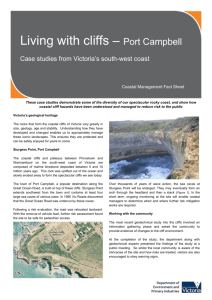Hengistbury Head Visitor and Education Centre
advertisement
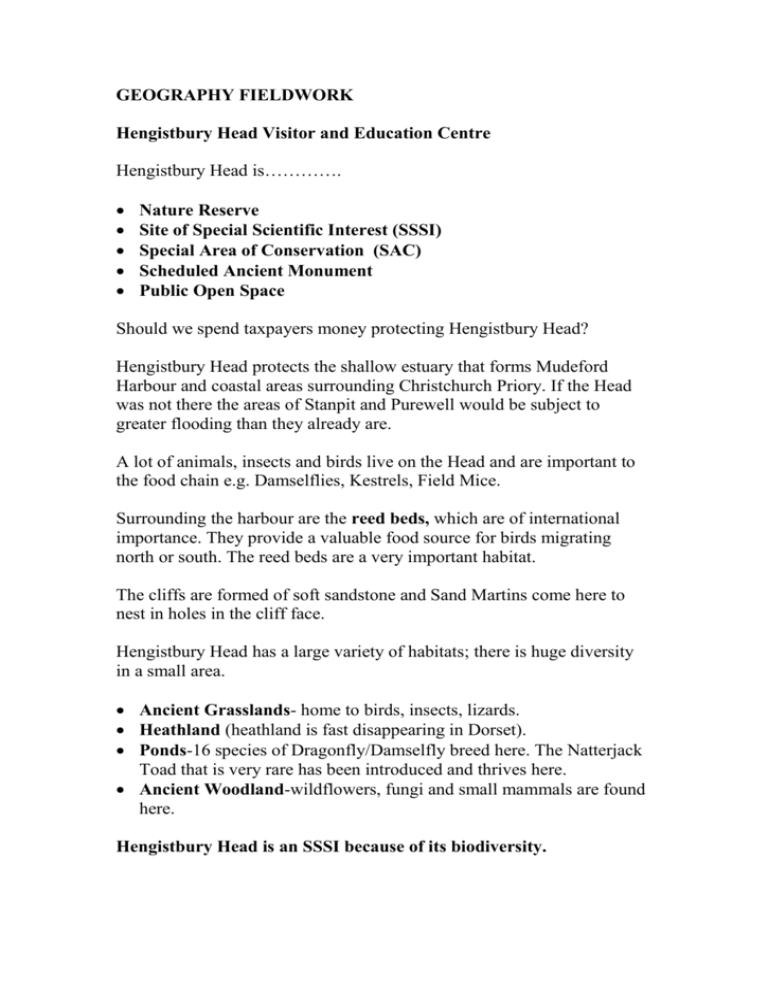
GEOGRAPHY FIELDWORK Hengistbury Head Visitor and Education Centre Hengistbury Head is…………. Nature Reserve Site of Special Scientific Interest (SSSI) Special Area of Conservation (SAC) Scheduled Ancient Monument Public Open Space Should we spend taxpayers money protecting Hengistbury Head? Hengistbury Head protects the shallow estuary that forms Mudeford Harbour and coastal areas surrounding Christchurch Priory. If the Head was not there the areas of Stanpit and Purewell would be subject to greater flooding than they already are. A lot of animals, insects and birds live on the Head and are important to the food chain e.g. Damselflies, Kestrels, Field Mice. Surrounding the harbour are the reed beds, which are of international importance. They provide a valuable food source for birds migrating north or south. The reed beds are a very important habitat. The cliffs are formed of soft sandstone and Sand Martins come here to nest in holes in the cliff face. Hengistbury Head has a large variety of habitats; there is huge diversity in a small area. Ancient Grasslands- home to birds, insects, lizards. Heathland (heathland is fast disappearing in Dorset). Ponds-16 species of Dragonfly/Damselfly breed here. The Natterjack Toad that is very rare has been introduced and thrives here. Ancient Woodland-wildflowers, fungi and small mammals are found here. Hengistbury Head is an SSSI because of its biodiversity. Ancient Monument The Head is also important historically. Evidence remains of a Stone Age settlement in the form of flint tools dating from 2500 years ago. 2000 years ago a Celtic Settlement grew up here and there is evidence of smelting iron, tool making and trading with the Romans. Pieces of Roman wine jugs have been found. The Celts built the Double Dykes for protection from invasion. Hengistbury Head was not always a headland. A band of chalk running through the Isle of Wight can be seen as evidence that it once connected with the band of chalk running through the Purbecks.8000 years ago Hengistbury was a hill inland away from the sea. After the last Ice Age, sea levels rose and the chalk ridge was breached. Hengistbury Head remains as a headland because the rock that forms it contains ironstone that was not eroded as quickly as the rest of the bay. Looking at an ariel view of the Headland we can see that the lower section is quite narrow and vulnerable. It is possible that it could be breached in time thus cutting off the higher ground forming an island. This would have a severe impact on the area around Mudeford Harbour. From photographs we can see that the lower section has experienced a lot of erosion in the past 90 years. Reasons for this erosion The lower cliffs are formed of layers of soft sands and gravels. They are made up of bands of soil/gravelstone/sandstone/gravelstone. The high cliffs are made up of bands of soil/gravelstone/Highcliffe sands/clay/ironstone/clay and at the bottom black sand. The high cliffs are stronger but are still subject to erosion due to slumping. The erosion of the cliffs is caused by processes of chemical action, mechanical and biological weathering. Public Amenity 1,250000 people visit Hengistbury Head every year and these people are responsible for some erosion. People walking close to the cliff edge trample the grass/vegetation, which is then lost and so no longer binds the soil together. Where vegetation has gone the soil is washed or blown away and small gullies form. These gradually get larger and are made worse by people climbing them. Also as vegetation is removed from the higher cliffs, the water soaks into the ground, it seeps down and reaches the clay where it seeps out at the joint. The clay is made slippery and heavy and slips down the slope this is called Rotational Slip. Protecting the base of the cliff is an excellent method of preventing erosion. Gabions have been placed on the lower cliffs to protect the Double Dykes and have been very effective. A large wide beach has formed at the base of the cliff as a result of the Long Groyne. The SW longshore drift has built up a considerable amount of material over the 60 years since it was built. In 1989 the council dredged up tons of shingle from off the coast of the Isle of Wight and deposited it on the beach at Hengistbury- Beach renourishment. This however removed by the action of the sea at a rate of 10% per year and so little if any remains. Nothing is now protecting the base of the cliff. Groynes would be the best defence but they cost £80,000 each and 6 would be necessary. Also building groynes has an impact further along the coast. People Management The placing of strategic fencing that keeps people away from the cliff edge can reduce visitor impact. Good footpaths encourage people to stay on the path and not trample the grassland. The Noddy Train is useful because it reduces the numbers of people walking on the Headland. Sometime ago it was decided to block the existing pathway between the Double Dykes and this has allowed for a dramatic recovery in the vegetation. Skylarks are once again nesting in the long grasses, an indication of an excellent recovery.
